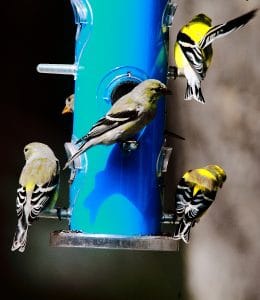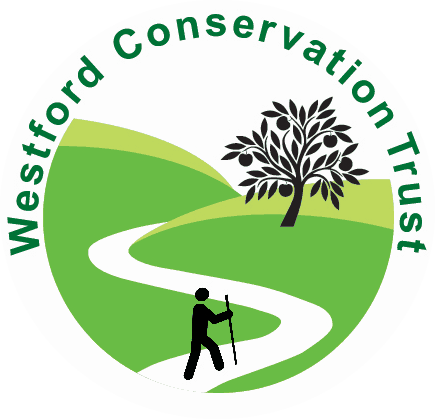
Happy New Year! At this time of year, I like to review your wildlife reports from the past year. It has been a very different year in many ways. For much of 2022 we underwent high temperatures and severe drought. Even this winter has been warm. We have had no notable snow as I write this column on January 3. Climate change is finally being taken seriously, as our State and local governments are writing Climate Roadmaps, to guide us towards sustainable living and development. A local non-profit group, Westford Climate Action, has been very busy and productive: see the WCA.org website.
Westford Wildlife Watch has moved to online publishing only, and now appears monthly on the Westford Conservation Trust website. Our flora and fauna reporters are few but mighty. Thirty Westford residents have reported this year, and have sent in many interesting reports. We hope that this review of their reports will inspire you to send in your reports in 2023. We welcome reports of both common and uncommon animals and plants, as well as reports on interesting animal behavior you notice. Many reporters send in photos with their reports, which are very welcome. There have been animals caught on trail and backyard cams. Photos of bear, deer, bobcat, coyote, fox, raccoon, opossum, skunk, mink and more have been captured.
Here are some notable reports from 2022. In January we were in a deep freeze of single digit temperatures. But chickadees, titmice and cardinals were already singing their spring songs–something to look forward to! On January 29, a big snow storm brought many birds to our feeders. By February 16, red-winged blackbirds, our first migrants arrived. A pair of goldeneye ducks were seen on Keyes Pond, and hooded mergansers showed up on Snake Meadow Brook, while a female pine grosbeak, a northern bird, lingered on Sherwood Drive. On March 11, woodcocks started up their mating dances and flights, and by March 18, wood frogs came out of hibernation to sing their “quacking” calls to attract mates to their vernal pools, and spring peepers were heard in every wetland. By April, pine warblers had arrived–our first of the warbler wave to arrive in May. By May 1, ruby-throated hummingbirds arrived at welcome sugar water feeders. On May 12, the migrants arrived en masse; Orioles, catbirds, wood thrush, great-crested flycatcher, phoebes, rose-breasted grosbeak, and warblers (black and white, parula, yellow-rumped, common yellowthroats, ovenbirds). On May 22, the first heat wave descended on us–a sweltering 90-97 degrees. June and July featured several long heat waves, and severe drought. Ferns started turning brown long before normal. Wetland wild flowers such as Joe Pye weed continued to do well. A new plant to me: Indian Hemp, was nestled into the Joe Pye Weed thickets. The only plant to survive the drought in our lawn was a little native plant, Common Copperleaf. They only grow to 4 inches tall, and are extremely drought tolerant, staying green the whole summer and fall. Why don’t we plant lawns of this plant? Some butterflies managed to make an appearance: Pearly Crescent, Tiger Swallowtail and a few Monarchs. In August Red-breasted Nuthatches, a northern bird, started to make an appearance at several feeders. A female blue-winged teal was spotted on Keyes Pond. We finally got some rain on August 23. In September an exciting rare bird was photographed in Forge Village: a Cerulean Warbler. October was gorgeous and golden, despite the drought. Wablers and kinglets took wing for southern climes and the winter birds returned: white-throated sparrows, dark-eyed juncos, American tree sparrows, and many red-breasted nuthatches. Late southern migrants such as Wood ducks and hooded mergansers were seen on Stony Brook, belted kingfisher and cedar waxwings started to move south.
This is an interesting month when both summer and winter birds can be seen and heard. Most people took their feeders down in November, due to hungry bear raids, so there were less reports. But on walks around town, one could find bluebirds, juncos, even a red-shouldered hawk could be seen. By November 30, brooks and ponds froze. Noisy pileated woodpeckers were heard in several locations. On December 12, we had snow–just one inch. Temperatures in early December were in the 20’s and 30’s. In the snow, the tracks of fisher, deer, squirrel, and rabbit could be seen near Keyes Pond. December 18, a large flock of juncos and robins was reported in Nabnasset. These birds can subsist entirely on berries in the winter. Temperatures in December fluctuated from the 30’s to the high 50’s. Christmas Eve we had a heavy rain and wind storm that finished up with an inch of snow. Keyes Pond ice was whooping, booming and cracking as the temperature rose. An unusual month indeed!
Many thanks to flora and fauna reporters for this year. Please send reports by the end of January for inclusion in next month’s column. You can call me at 692-3907, e-mail me at mariancharman@gmail.com, or write me at 7A Old Colony Drive.
December Reports:
Peggy Bennett, Nabnasset St. December report: a pair of bluebirds here since November, two white-tailed deer in the yard, a flock of juncos, lots of nuthatches, chickadees, sparrows, titmice, male and female cardinal, red-bellied and downy woodpeckers, Carolina wren. December 8, two river otters sunning themselves on a downed tree on Mill Pond–so cute!
Marian/Bill Harman, Old Colony Drive. December 11, 20’s, cloudy. Red-breasted nuthatch, titmice, chickadees, goldfinch. December 12, 1 inch of snow. two house sparrows, two goldfinches, three chickadees, one red-bellied woodpecker, two titmice, six juncos. December 15, 30’s. We put up a new sunflower hearts feeder–very popular! eight to ten juncos, four goldfinches, two blue jays, three chickadees, three titmice, one white-breasted nuthatch, two downy woodpeckers. December 18, to the meadow: coyote scat, female cardinal, hairy woodpecker, flock of twenty juncos with about ten robins eating on the ground, crow calling, female house finch, song sparrow, red-bellied woodpecker. Tracks in the mud: mouse, rabbit, squirrel, fisher, coyote. December 27, 30 degrees, sunny, breezy. A walk on the beaver dam trail: loud cracks heard in the wetland between Snake Meadow Brook and Keyes Pond. Ice breaking up sounds like a pile of lumber falling. December 30, 56 degrees!
Rosemarie Koester, Providence Rd.
December 28. End of month report: Juncos, one pair of cardinals, goldfinches, house finches, chickadees, tufted titmouse, four blue jays, doves, gray squirrels, mouse.
Tom Ennis, Almeria Drive: Coyote caught on trail cam, posing by the light of the moon. Photos of beaver caused flooding on the Acker trail.
Ron Gemma, Concord Rd. American goldfinch on feeder, photo shows eye disease.
_______________________
Marian Harman is a member of the Westford Conservation Trust, a non-profit conservation organization, whose mission is the preservation of Westford’s open spaces and trails. The Trust welcomes new members and volunteers. Check out our website at westfordconservationtrust.org or visit us on Facebook.
